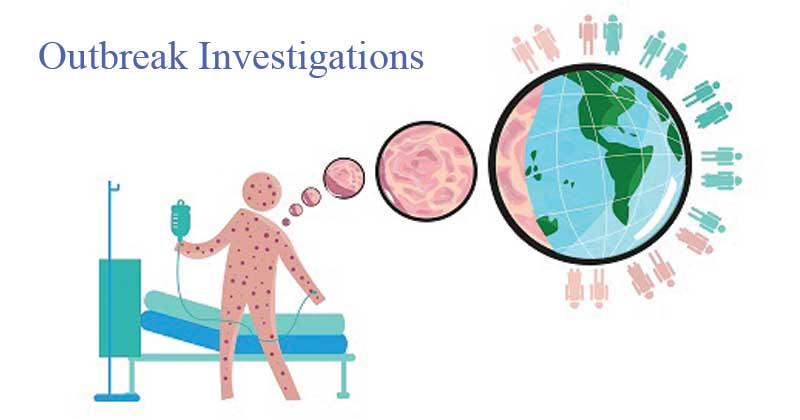- An outbreak is an increased frequency of a disease above the usual rate (endemic rate) in a given population or geographic area.
- Usually, the cases are presumed to have a common cause or to be related to one another in some way.

Image Source: Clipart Station
Interesting Science Videos
Why should we investigate outbreaks?
The outbreak investigation is an essential function of public health professionals. It is an opportunity to gain new knowledge of diseases and to discover the weaknesses of current public health practices and systems. It is essential for:
- Control and prevention measures
- Research Opportunities
- Training
- Public, Political or Legal concerns
- Program Considerations
Objectives of Outbreak Investigations
- Primary- to control the spread of disease
- To determine the causes of disease, its source & mode of transmission
- To determine who is at risk
- To determine what exposures predispose to disease
- To know the magnitude of the problem
- To identify the new agent
- To determine the effectiveness of control measures
- To identify methods for present & future prevention & control
Steps in Investigating an Outbreak
- Investigating an acute outbreak may be primarily deductive (i.e., reasoning from premises or propositions proved previously) or inductive (i.e., reasoning from particular facts to a general conclusion), or it may be a combination of both.
- Important considerations in investigating an acute outbreak of infectious diseases include determining that an outbreak has in fact occurred and defining the extent of the population at risk, determining the measure of spread and reservoir, and characterizing the agent.
- Steps commonly used are listed below, but depending on the outbreak, the exact order may differ.
1. Define the outbreak and validate the existence of an outbreak
a. Define the “numerator” (cases)
- Clinical features: Is the disease known?
- What are its serologic or cultural aspects?
- Are the causes partially understood?
b. Define the “denominator”
- What is the population at risk of developing the disease (i.e., susceptible)?
c. Determine whether the observed number of cases clearly exceeds the expected number
d. Calculate the attack rates
2. Examine the distribution of cases by the following:
- Look for time–place interactions
3. Look for combinations (interactions) of relevant variables
4. Develop hypotheses based on the following:
- Existing knowledge (if any) of the disease
- Analogy to diseases of known etiology
- Findings from investigation of the outbreak
5. Test hypotheses
- Further analyze existing data (case-control studies)
- Refine hypotheses and collect additional data that may be needed
6. Recommend control measures
- Control of a current outbreak
- Prevention of future similar outbreaks
7. Prepare a written report of the investigation and the findings
8. Communicate findings to those involved in policy development and implementation and to the public
Difficulties in Outbreak Investigations
- There is pressure & urgency to conclude the investigations quickly which may lead to hasty decisions.
- Data sources are often incomplete & less accurate.
- Decreased statistical power due to the analysis of small numbers.
- Publicity surrounding the investigation – community members may have preconceived ideas.
References
- Gordis, L. (2014). Epidemiology (Fifth edition.). Philadelphia, PA: Elsevier Saunders.
- Park, K. (n.d.). Park’s textbook of preventive and social medicine.
- Beaglehole, Robert, Bonita, Ruth, Kjellström, Tord & World Health Organization. (1993). Basic epidemiology, Updated reprint. World Health Organization.
- Hennekens CH, Buring JE. Epidemiology in Medicine, Lippincott Williams & Wilkins, 1987.
- http://sphweb.bumc.bu.edu/otlt/mph-modules/ph/outbreak/Outbreak_print.html
- https://www.cdc.gov/csels/dsepd/ss1978/lesson6/section2.html
- https://www2.wpro.who.int/internet/files/eha/dir/Disaster%20Preparedness%20and%20Response/Outbreak%20Investigation.pdf
- https://oxfordmedicine.com/view/10.1093/med/9780199661756.001.0001/med-9780199661756-chapter-106
- http://www.nwcphp.org/training/opportunities/online-courses/introduction-to-outbreak-investigation
